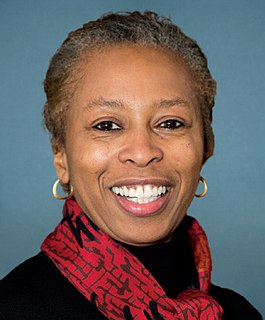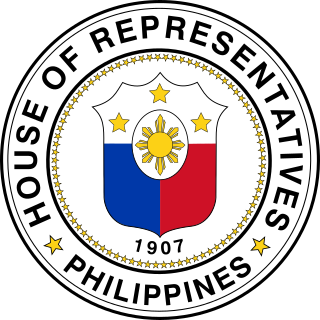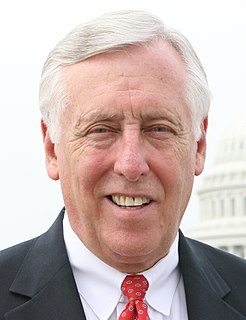Related Research Articles

The speaker of the United States House of Representatives is the presiding officer of the United States House of Representatives. The office was established in 1789 by Article I, Section 2 of the U.S. Constitution. The speaker is the political and parliamentary leader of the House of Representatives, and is simultaneously the House's presiding officer, de facto leader of the body's majority party, and the institution's administrative head. Speakers also perform various other administrative and procedural functions. Given these several roles and responsibilities, the speaker usually does not personally preside over debates. That duty is instead delegated to members of the House from the majority party. Neither does the speaker regularly participate in floor debates.

The Michigan Legislature is the legislature of the U.S. state of Michigan. It is organized as a bicameral body composed of an upper chamber, the Senate, and a lower chamber, the House of Representatives. Article IV of the Michigan Constitution, adopted in 1963, defines the role of the Legislature and how it is to be constituted. The chief purposes of the Legislature are to enact new laws and amend or repeal existing laws. The Legislature meets in the Capitol building in Lansing.

The Florida Legislature is the legislature of the U.S. State of Florida. It is organized as a bicameral body composed of an upper chamber, the Senate, and a lower chamber, the House of Representatives. Article III, Section 1 of the Florida Constitution, adopted in 1968, defines the role of the legislature and how it is to be constituted. The legislature is composed of 160 state legislators. The primary purpose of the legislature is to enact new laws and amend or repeal existing laws. It meets in the Florida State Capitol building in Tallahassee.
Congressional staff are employees of the United States Congress or individual members of Congress.

The Tennessee General Assembly (TNGA) is the state legislature of the U.S. state of Tennessee. It is a part-time bicameral legislature consisting of a Senate and a House of Representatives. The Speaker of the Senate carries the additional title and office of Lieutenant Governor of Tennessee. In addition to passing a budget for state government plus other legislation, the General Assembly appoints three state officers specified by the state constitution. It is also the initiating body in any process to amend the state's constitution.

The United States House Committee on House Administration deals with the general administration matters of the United States House of Representatives.

The 87th United States Congress was a meeting of the legislative branch of the United States federal government, composed of the United States Senate and the United States House of Representatives. It met in Washington, D.C. from January 3, 1961, to January 3, 1963, during the final weeks of the administration of U.S. President Dwight D. Eisenhower and the first two years of the administration of U.S. President John Kennedy. The apportionment of seats in the House of Representatives was based on the Seventeenth Census of the United States in 1950, along with 2 seats temporarily added in 1959. Both chambers had a Democratic majority.

The Rayburn House Office Building (RHOB) is a congressional office building for the U.S. House of Representatives in the Capitol Hill neighborhood of Washington, D.C., between South Capitol Street and First Street.

The Clerk of the United States House of Representatives is an officer of the United States House of Representatives, whose primary duty is to act as the chief record-keeper for the House.

The United States Capitol Complex is a group of about a dozen buildings and facilities in Washington, D.C., that are used by the U.S. Federal government. The buildings and grounds within the complex are managed and supervised by the Architect of the Capitol.

The Ford House Office Building is one of the four office buildings containing U.S. House of Representatives staff in Washington, D.C., on Capitol Hill.

The Congressional office buildings are the office buildings used by the United States Congress to augment the limited space in the United States Capitol. The Congressional office buildings are part of the Capitol Complex, and are thus under the authority of the Architect of the Capitol and protected by the United States Capitol Police. The office buildings house the individual offices of each U.S. Representative and Senator as well as committee hearing rooms, staff rooms, multiple cafeterias, and areas for support, committee, and maintenance staff.

The Utah State Legislature is the state legislature of the U.S. state of Utah. It is a bicameral body, comprising the Utah House of Representatives, with 75 state representatives, and the Utah Senate, with 29 state senators. There are no term limits for either chamber.
The United States Capitol Preservation Commission was established under Title VIII of Public Law 100-696 in November 1988 for the purpose of providing for improvements in, preservation of, and acquisitions for the United States Capitol and other locations under the control of the Congress. In September 1999, the commission was given the responsibility, pursuant to Public Law 106–57, for approving the planning, engineering, design, and construction milestones of the Capitol Visitor Center (CVC). The CVC will be a facility, located under the East Plaza of the Capitol that is designed to enhance the experience of visitors to the Capitol through improved visitor orientation and related services, strengthened Capitol security, and integration of the center's design concepts with the appropriate improvements to the Capitol's East Plaza.

The speaker of the House of Representatives of the Philippines is the presiding officer and the highest-ranking official of the lower house of Congress, the House of Representatives, as well as the fourth highest and most powerful official of the Government of the Philippines.
Title 2 of the United States Code outlines the role of Congress in the United States Code.

The United States House of Representatives is the lower house of the United States Congress, with the Senate being the upper house. Together they compose the national bicameral legislature of the United States.

The United States Senate is the upper chamber of the United States Congress, which, along with the United States House of Representatives—the lower chamber—constitutes the legislature of the United States. The Senate chamber is located in the north wing of the Capitol Building in Washington, D.C.
United States House of Representatives Page Program was a program run by the United States House of Representatives, under the office of the Clerk of the House, in which high school students acted as non-partisan federal employees in the House of Representatives, providing supplemental administrative support to House operations in a variety of capacities in Washington, D.C., at the United States Capitol. The program ended in 2011, although the Senate Page program continued. Pages served within the U.S. House of Representatives for over 180 years.

Party leaders and whips of the United States House of Representatives, also known as floor leaders, are elected by their respective parties in a closed-door caucus by secret ballot. With the Democrats holding a majority of seats and the Republicans holding a minority, the current leaders are: Majority Leader Steny Hoyer, Majority Whip Jim Clyburn, Minority Leader Kevin McCarthy and Minority Whip Steve Scalise.
References
| This United States government–related article is a stub. You can help Wikipedia by expanding it. |